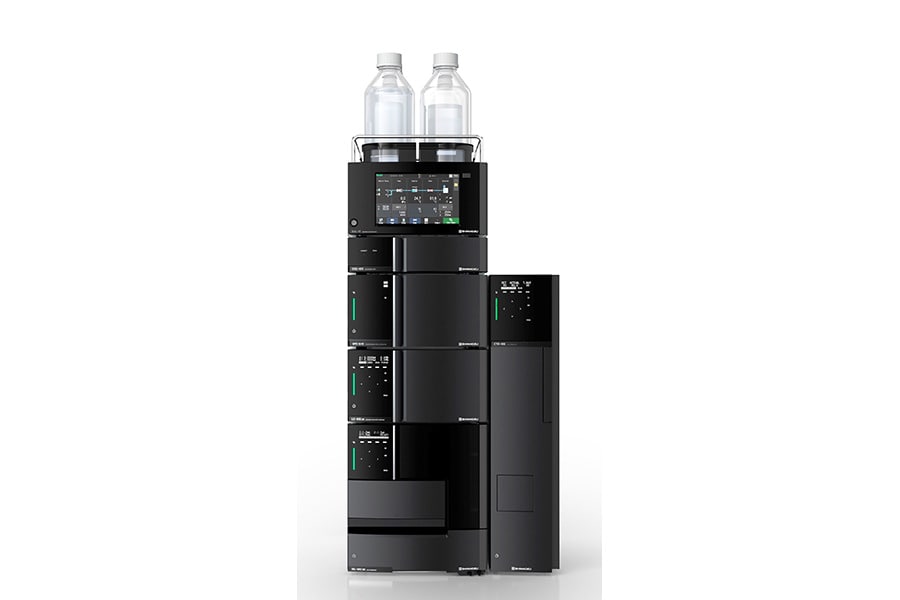December 5, 2023 | News & Notices
Highly Flame Resistant Cellulose Fiber Composite Resin Developed with Tomoegawa Co., Ltd. and FP Chemical Industry Co.,Ltd.
In a World’s First, Components Compounded with Cellulose Fibers are being Adopted for Analytical and Measuring Instruments
In a world’s first, Shimadzu Corporation is adopting a cellulose fiber reinforced flame resistant composite resin, a functional, environmentally friendly material, for our analytical and measuring instruments. This resin was created based on GREEN CHIP CMF™*1 developed collaboratively by Tomoegawa Co., Ltd. (Chuo City, Tokyo) and FP Chemical Industry Co.,Ltd. (Fuji City, Shizuoka Prefecture) in 2020. The development of this plastic*2 was the result of a challenge by Shimadzu to improve the flame resistance, which was then solved by the three companies. The materials will be used in the configuration units of 15 models in the Nexera series of liquid chromatographs shipped starting in late November.

The Nexera Series Liquid Chromatograph in which the Cellulose Fiber Reinforced Flame Resistant Composite Resin has been Adopted in the Configuration Units
GREEN CHIP CMF is a sustainable material compounded with cellulose fibers, thereby limiting the use of petroleum derived resins, leading to a reduction in CO2. Because of its high strength, components can be molded more thinly, reducing the weight of products. However, the exterior and components of analytical instruments and other electrical equipment should be flame resistant from the perspective of safety. Both petroleum derived plastics and plant derived cellulose are flammable, and increasing their respective flame resistance was problematic. Tomoegawa Co., Ltd., FP Chemical Industry Co.,Ltd., and Shimadzu Corporation spent three years developing a compounding technique for combining resin and cellulose, both of which are flammable materials, but increasing their flame resistance while maintaining a certain level of strength.
Shimadzu Corporation is initially adopting the product for their liquid chromatographs, but has plans for the horizontal deployment of compounded components made of cellulose fiber reinforced flame resistant composite resins in other analytical and measuring instruments. They also intend to increase the usage ratio of sustainable materials in various products. In future, in order to achieve the transition to a circular economy, as raised in the current medium-term management plan, Shimadzu is reducing the amount of petroleum derived plastic used as well as CO2 emissions.
- *1: GREEN CHIP CMF was developed collaboratively by Tomoegawa Co., Ltd. and FP Chemical Industry Co.,Ltd.
- *2: UL94_V-0 equivalent


